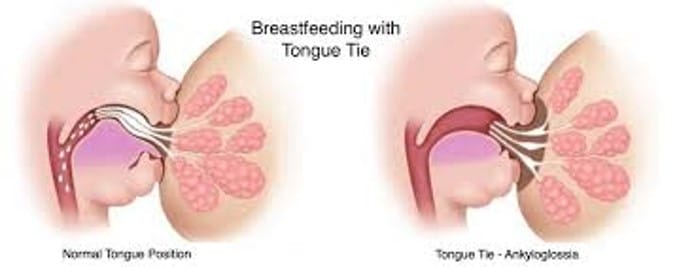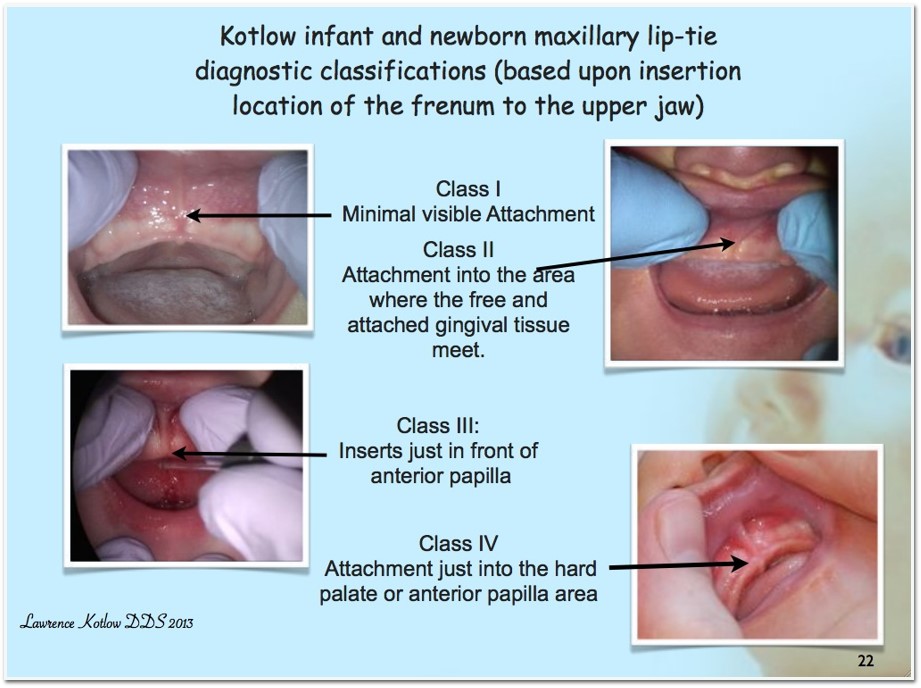Tongue Tied Baby Symptoms found with Ankyloglossia
Normal tongue function allows a baby to latch adequately and breastfeed efficiently. As your child grows, having proper tongue function will promote normal speech development, make it possible for a child to self-cleanse the mouth during eating, allow adequate swallowing patterns, and allow for proper growth and development. Common misconceptions regarding tongue-ties are that they will stretch and correct themselves.
How does tongue-tie affect breastfeeding?
- Prevalence: Ankyloglossia is found in 3-15% of newborns and significantly affects breastfeeding.
- Latching issues: Infants with a tongue tie may struggle to latch correctly, compressing the nipple onto the hard palate, leading to nipple pain and potential bleeding.
- High palate: Typically accompanies tongue tie, reducing suction and milk transfer.

Signs and Symptoms of Tongue and Lip Ties
Some babies with tongue ties and lip ties are symptom-free and able to attach to the breast. However, many of these infants have breastfeeding problems. The following signs are common among infants with tongue and lip ties and their mothers. However, it is important to note that these signs can be linked to other breastfeeding problems and are not solely related to ties.
Mothers may experience:
- Flattened Nipples after Breastfeeding
- Nipple Pain and Damage
- Prolonged Feedings
- Poor Breast Drainage
- Decreased Milk Production
Infants may exhibit:
- Noisy Suckling or Clicking
- Popping on and off the Breast
- Leaking on the sides of the mouth
- Poor Weight Gain
- Coughing or Gagging
- Lip Blisters
- Gas Pain
- Noisy Breathing or Sleeping During Sleep
- Reflux or Colic Symptoms
How are Tongue and Lip Ties Diagnosed
- Movement restriction: Ties are diagnosed if they restrict movement and impair mobility.
- Proper examination: The infant should be on the examiner’s lap with the head facing the same direction as the examiner.
- Functional diagnosis: Tongue tie diagnosis is based on function rather than appearance.
- It is important to note that not all ties cause problems and require correction.
Potential Effects on Breast Feeding
A normal breastfeeding motion is accomplished when the infant is able to flange their upper lip outward toward their nose, allowing the mucous membrane portion of the lip to contact the breast. When the upper lips’ inner mucosa or frenum is attached to the alveolar ridge (as seen below), and the lip is unable to move upward fully, it can create a shallow latch. This can allow for the passage of excess air to be introduced into the infant’s belly, which results in reflux.



